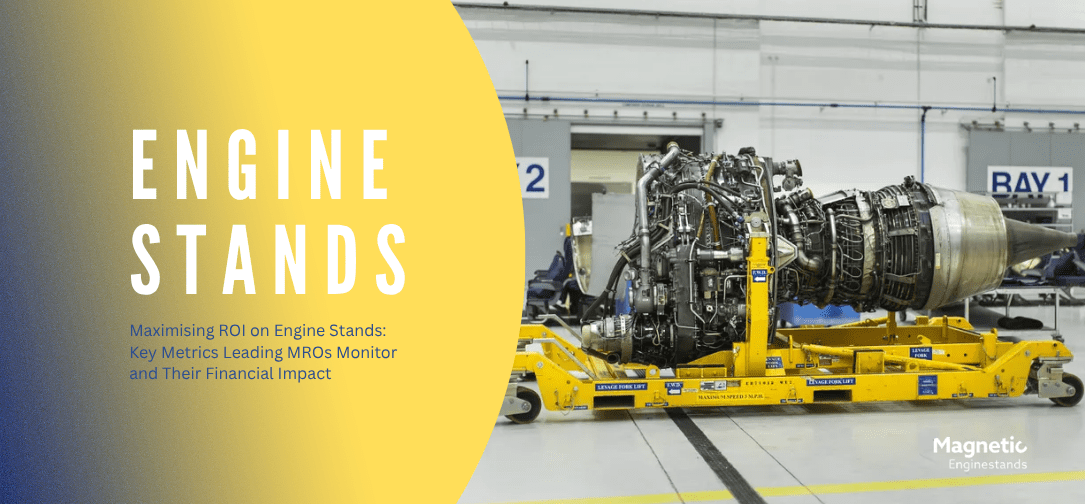In modern MRO operations, engine stands are more than just workshop tools – they are assets that directly impact operational efficiency and the bottom line. Monitoring their utilisation isn’t just about workflow, it’s about financial performance. Understanding how effectively each stand is deployed allows providers to optimise costs, plan investments, and ultimately maximise ROI. Let’s take a closer look.
Understanding Engine Stand ROI
Return on investment (ROI) for engine stands goes beyond purchase cost – it reflects how effectively MROs convert these assets into revenue. Each day a stand is idle represents a missed opportunity, while efficient utilisation accelerates engine turnarounds and reduces per-engine costs. Leading MROs quantify the financial impact of deployment, maintenance, and downtime to ensure every stand contributes positively to profitability. By evaluating ROI systematically, organisations can make informed decisions on asset allocation, upgrades, and long-term budgeting.
Key Metrics Leading MROs Track
Leading MROs monitor specific metrics to ensure engine stands deliver maximum financial value. Utilisation rate is a primary indicator, measuring the percentage of time each stand is actively in use versus idle. Higher utilisation directly correlates with better ROI, as assets contribute more to throughput and revenue. Turnaround time per engine is another important metric – reducing the time an engine spends on a stand increases overall capacity without additional investment.
Maintenance costs are tracked meticulously to balance upkeep expenses against operational hours, ensuring that preventive maintenance does not erode profitability. Equally important is the impact of downtime: every period a stand is unavailable can delay projects and incur financial losses, making proactive scheduling essential. Lastly, MROs consider asset lifecycle and depreciation, factoring in replacement timing and residual value into financial planning.
By keeping a close eye on these metrics, organisations can pinpoint inefficiencies, make data-driven decisions, and ultimately enhance both operational performance and the bottom line.
Financial Implications of Tracking Metrics
Tracking engine stand metrics has a direct impact on an MRO’s financial performance. Accurate utilisation and maintenance data enable more precise budgeting and cost forecasting, helping organisations allocate resources efficiently. For example, identifying underutilised stands allows companies to reassign or consolidate assets, thereby avoiding unnecessary capital expenditures. Monitoring turnaround times and downtime also highlights bottlenecks that, when addressed, can increase throughput and reduce per-engine costs, directly boosting revenue.
Moreover, understanding maintenance costs and depreciation helps in planning timely upgrades or replacements, preventing sudden large expenditures that could strain cash flow. Even minor improvements in stand utilisation, such as reducing idle time by a few hours per week, can result in significant annual savings. By linking operational metrics to financial outcomes, leading MROs make investment decisions that maximise return while minimising waste, ensuring each engine stand contributes positively to overall profitability.
Tools and Technologies Supporting ROI
Modern MROs leverage technologies to monitor and enhance engine stand utilisation, turning data into tangible financial benefits. Digital dashboards, tracking software, and IoT sensors provide real-time insights into usage, maintenance needs, and downtime. Among innovative solutions, Magnetic Enginestands offer enhanced stability and easy integration with tracking systems, improving both operational efficiency and asset visibility. By using these tools, organisations can optimise scheduling, reduce unnecessary maintenance costs, and make informed investment decisions, ultimately maximising the financial return on each engine stand while supporting data-driven asset management strategies.



































